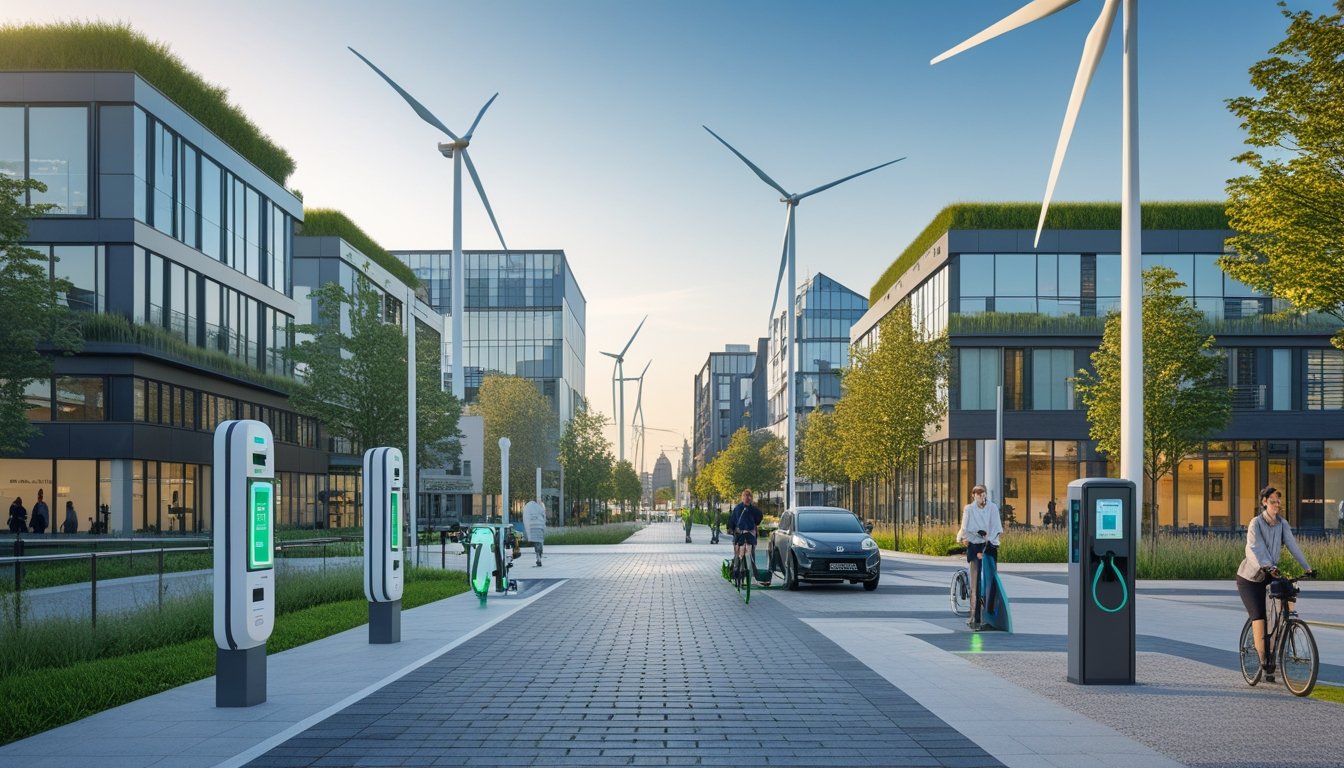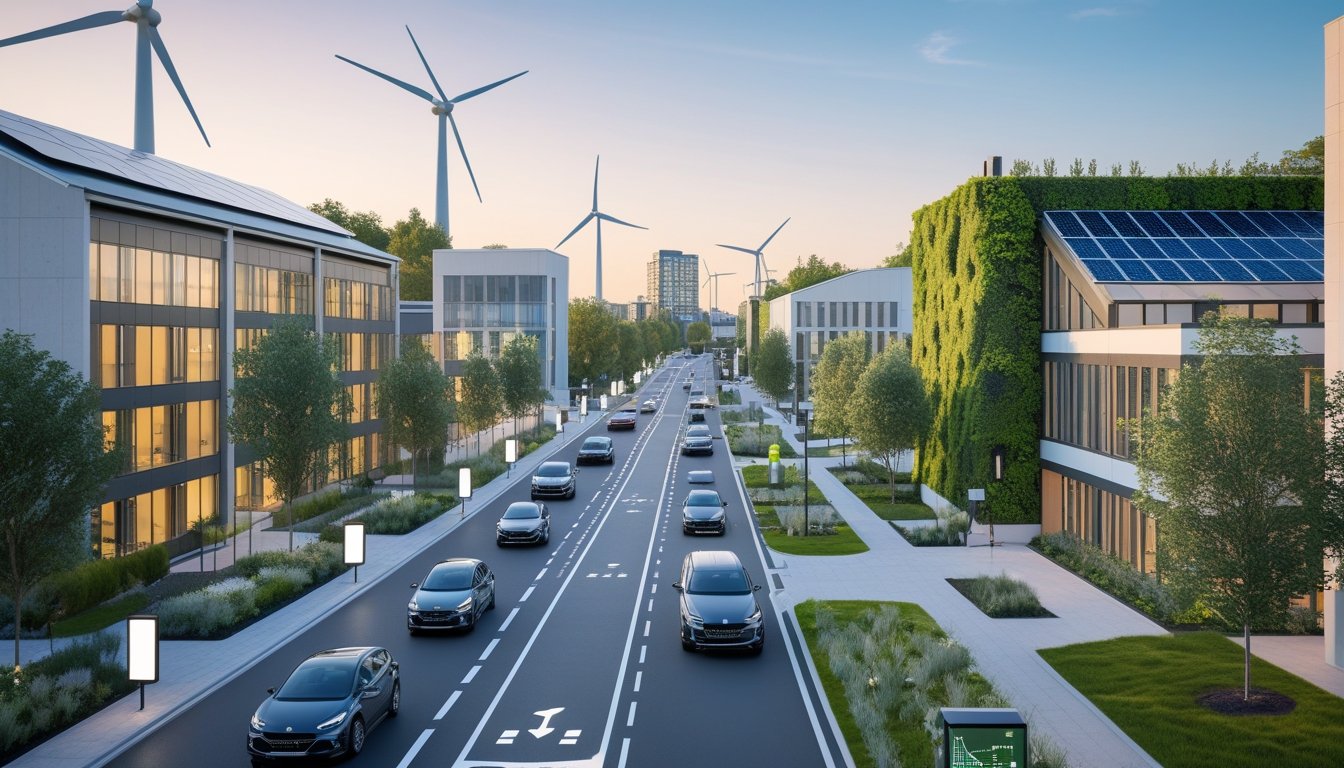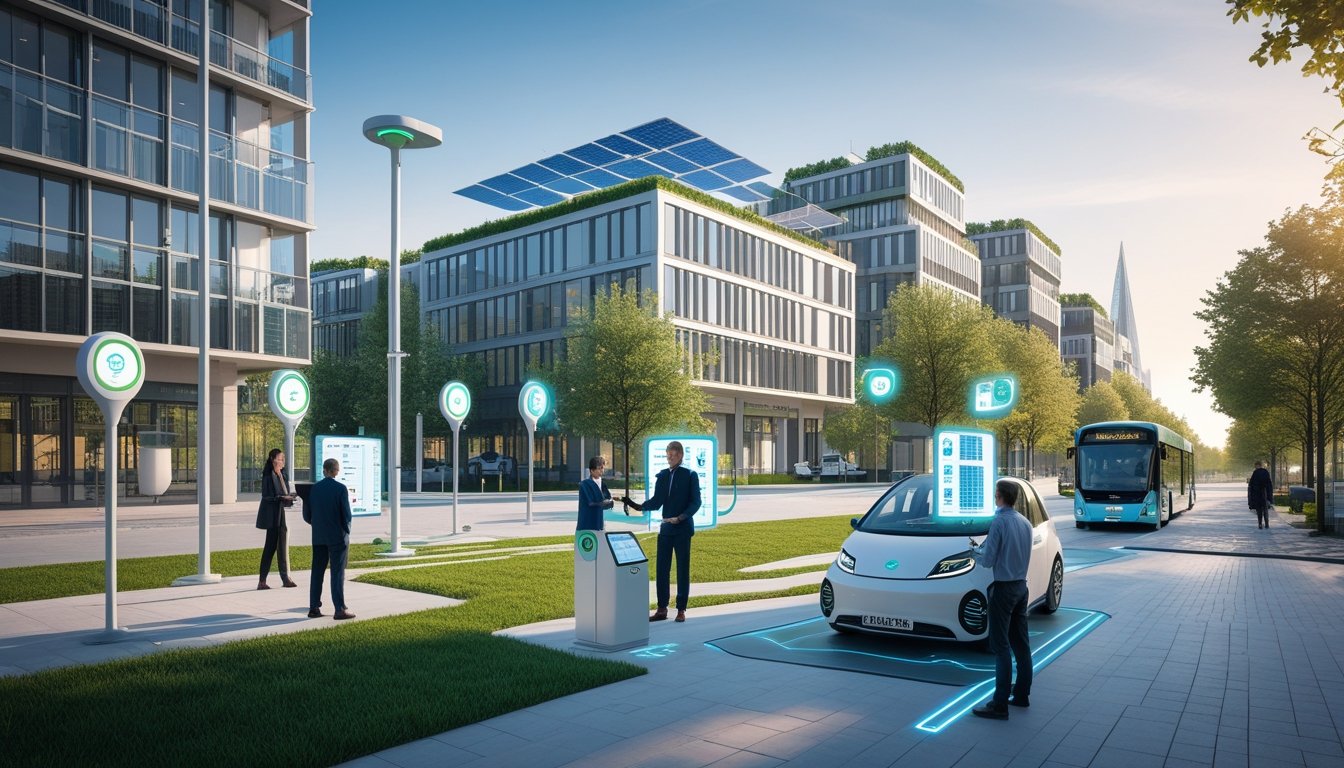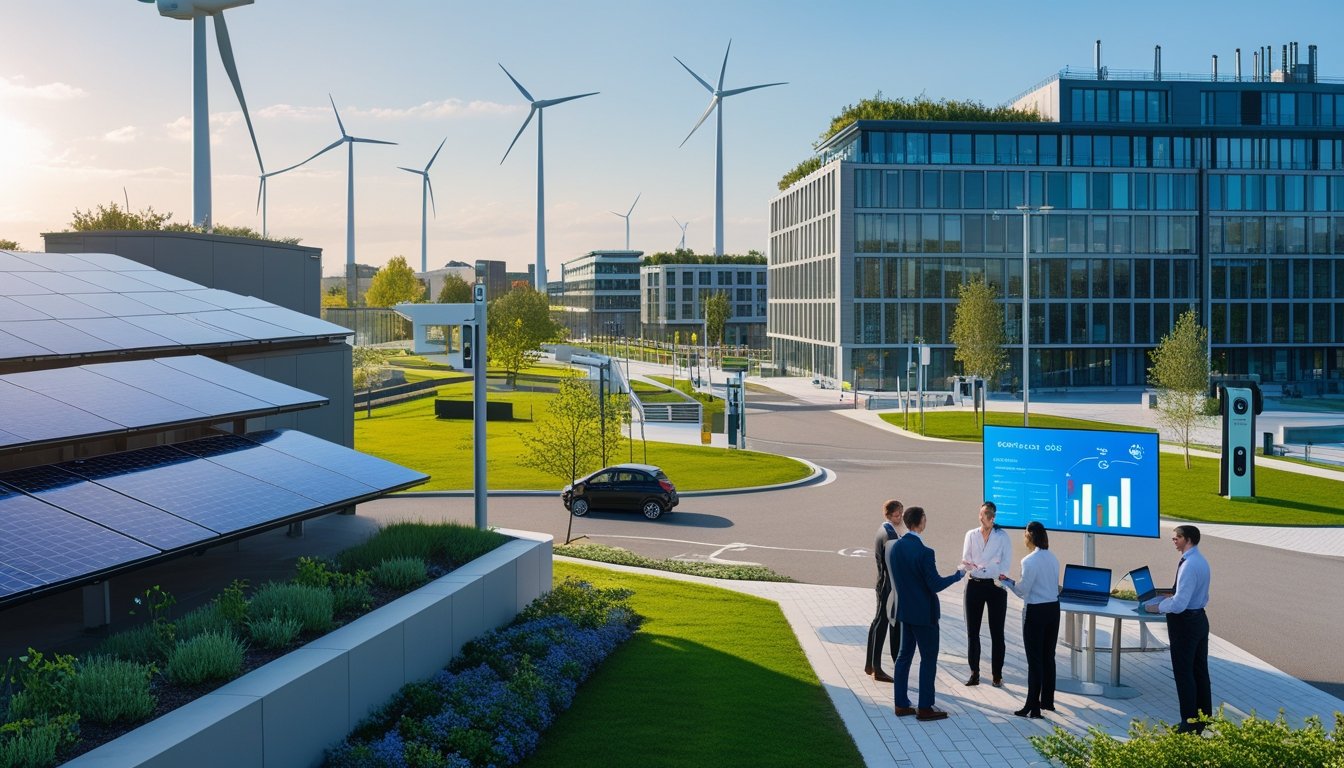Late updated: 08 Jul 2025 08:07
Written by: Eleanor Hartman
Emerging Technologies In UK Urban Energy Efficiency: Advancements Shaping Sustainable Cities
In recent years, the landscape of urban energy in the UK has experienced a significant transformation, driven by the adoption of innovative technologies designed to enhance energy efficiency. As we witness a growing integration of renewable energy sources with smart grid technologies, our cities are not only becoming more energy-efficient but also increasingly sustainable. Smart Local Energy Systems (SLES) are pioneering this change by optimising the use of local renewable resources and integrating advanced digital technologies.

As concerns about climate change mount, there's an urgent need for cities to reduce carbon emissions and adopt sustainable practices. We see remarkable advancements in fields such as offshore wind farms, solar energy, and energy storage solutions, all of which contribute to the nation's goal of a greener energy future. Our urban centres are spearheading these initiatives, leveraging technological innovation to support economic growth and environmental preservation simultaneously.
The application of smart technologies, paired with policy support, holds immense potential to reshape our understanding of urban energy systems. Whether through efficient energy use through real-time data analytics or engaging the community in community-driven energy projects, there's an exciting journey ahead in our quest for urban energy efficiency in the UK.
Key Takeaways
- Emerging technologies improve urban energy efficiency in the UK.
- Smart Local Energy Systems utilise local renewable resources.
- Urban energy systems are evolving with smart grid integration.
Key Emerging Technologies Driving Urban Energy Efficiency in the UK

In the UK, emerging technologies are significantly reshaping urban energy efficiency. From integrating renewable energy into urban landscapes to leveraging digitalisation and smart grids, these innovations are pivotal in reducing energy consumption and enhancing sustainability.
Digitalisation and Smart Grids
Digitalisation is transforming how we manage urban energy, with smart grids at the forefront of this evolution. These grids use advanced digital technology to deliver electricity more efficiently and reliably. They integrate data analytics to optimise energy distribution and facilitate the incorporation of renewable sources like solar and wind power.
With real-time monitoring and demand-response capabilities, smart grids offer precise control over energy flows, ensuring stability and resilience. Besides, smart meters empower consumers by providing insights into their energy usage, helping them make informed decisions to reduce consumption. By integrating renewable energy systems, such as bioenergy and district heating, smart grids support the transition towards a low-carbon economy. The result is not only energy efficiency but also improved energy security.
Renewable Energy Integration in Urban Settings
Incorporating renewable energy into urban settings is crucial for reducing emissions and meeting sustainability goals. Solar power and wind energy are leading the charge, with urban solar panel installations becoming more commonplace. Wind turbines are also appearing on the outskirts of cities, contributing to local energy needs.
These renewable solutions are complemented by community energy projects that engage citizens and local businesses in generating sustainable power. For instance, district heating systems utilise bioenergy to provide efficient heating solutions across urban areas. By integrating these technologies, we are creating energy-efficient urban environments that enhance energy resilience, reduce dependency on fossil fuels, and support renewable energy initiatives. The integration of off-grid systems further aids in maintaining energy stability and security.
Advanced Energy Storage Solutions
Energy storage is a vital component of achieving urban energy efficiency. With the increasing adoption of renewable energy sources, advanced energy storage solutions, particularly battery storage, have become paramount. Lithium-ion batteries, capable of storing excess energy generated from solar and wind, are being widely deployed across the UK.
These solutions enable the efficient use of renewable energy and provide backup during peak demands or when renewables are not generating power. Solar battery storage costs have decreased, making these systems more accessible for urban areas. Moreover, electric vehicle adoption supports energy storage by utilising vehicle batteries as distributed storage solutions. Through advanced energy storage, we are ensuring energy stability, resilience, and optimised resource usage within urban settings.
Innovative Strategies and Initiatives for Enhancing Urban Energy Efficiency

To effectively boost urban energy efficiency, it is essential to incorporate advanced technologies and collaborative efforts. By focusing on building improvements, supportive government policies, and localised community projects, the UK can lead in sustainable urban development.
Building Energy Efficiency Improvements
Focusing on energy efficiency in buildings is paramount in urban areas. Advanced technologies, such as smart meters and automated building management systems, enable real-time monitoring and optimising of energy use. Implementing green building standards like BREEAM encourages the reduction of energy consumption through sustainable building designs. Retrofitting older structures with insulation, high-efficiency windows, and LED lighting further conserves energy. Innovative materials like phase-changing materials for temperature control also play a role. Collectively, these strategies significantly lower energy use and carbon emissions in cities.
Government and Policy Frameworks
Government programmes and policy frameworks significantly drive urban energy efficiency. By developing and enforcing regulations that promote the use of renewable energy systems, the government ensures that cities adopt sustainable practices. Grants and subsidies for renewable energy installations, such as solar panels and wind turbines, are practical incentives provided to individuals and businesses.
Furthermore, legislation mandating energy performance certificates pushes for transparency in building energy efficiency. Collaboration between national and local governments facilitates the alignment of energy systems with regional needs, making energy use more efficient. Smart city initiatives supported by government policies enhance urban planning and reduce overall resource consumption.
Community and Localised Projects
Community engagement in energy projects is a catalyst for urban transformation. Localised renewable energy projects, like community solar farms and shared battery storage systems, enable residents to collectively benefit from sustainable technology. These projects empower communities by reducing reliance on the grid and decreasing energy costs.
Local energy cooperatives further promote the collective ownership and management of renewable energy resources. By fostering local participation, these initiatives harness communal effort and knowledge to implement effective and efficient energy strategies. Education and awareness programmes at the community level create a culture attentive to energy conservation, reinforcing the transition toward energy-efficient urban living.
Frequently Asked Questions

In exploring how emerging technologies are reshaping energy efficiency in UK urban areas, we focus on various innovative methods and technology integrations. These advancements include the Internet of Things (IoT), smart grid technology, governmental policies, and building information modelling.
What innovative methods are UK cities adopting to reduce energy consumption in the urban landscape?
UK cities are exploring a mix of renewable energy systems, such as solar panels and wind turbines, combined with energy-efficient buildings and smart controls. Initiatives include smart metering and energy management systems that optimise resource use, reflecting a commitment to sustainable urban development.
How is the Internet of Things (IoT) being utilised in the UK to enhance energy efficiency in urban areas?
The IoT plays a significant role in optimising energy consumption by enabling smart devices to gather data on usage patterns. Through real-time monitoring and automated adjustments, IoT systems improve energy efficiency in buildings and infrastructure, contributing to significant energy savings.
What role does smart grid technology play in the UK's urban energy efficiency improvements?
Smart grid technology enhances energy distribution efficiency by integrating renewable energy sources and implementing demand response strategies. These grids allow for better energy management and storage solutions, ensuring reliable and sustainable electricity delivery across urban areas.
How do UK government policies support the development of sustainable and efficient urban energy systems?
Government policies encourage research, innovation, and investment in clean energy technologies. They provide support through subsidies and incentives for adopting energy-efficient solutions, fostering an environment conducive to sustainable development.
What are the main challenges faced when integrating renewable energy sources into UK urban energy grids?
Challenges include intermittency of renewable sources, grid compatibility, and infrastructure costs. Balancing supply and demand while modernising existing grids can be complex, but ongoing advancements and innovations work towards overcoming these hurdles.
In what ways are UK urban planners leveraging building information modelling (BIM) to increase energy efficiency?
BIM enables planners to simulate energy performance and optimise building designs for efficiency. It allows for detailed analysis of energy use patterns, leading to the creation of buildings that consume less energy and align with sustainability goals. Planners utilise BIM to streamline construction processes, reducing waste and costs.